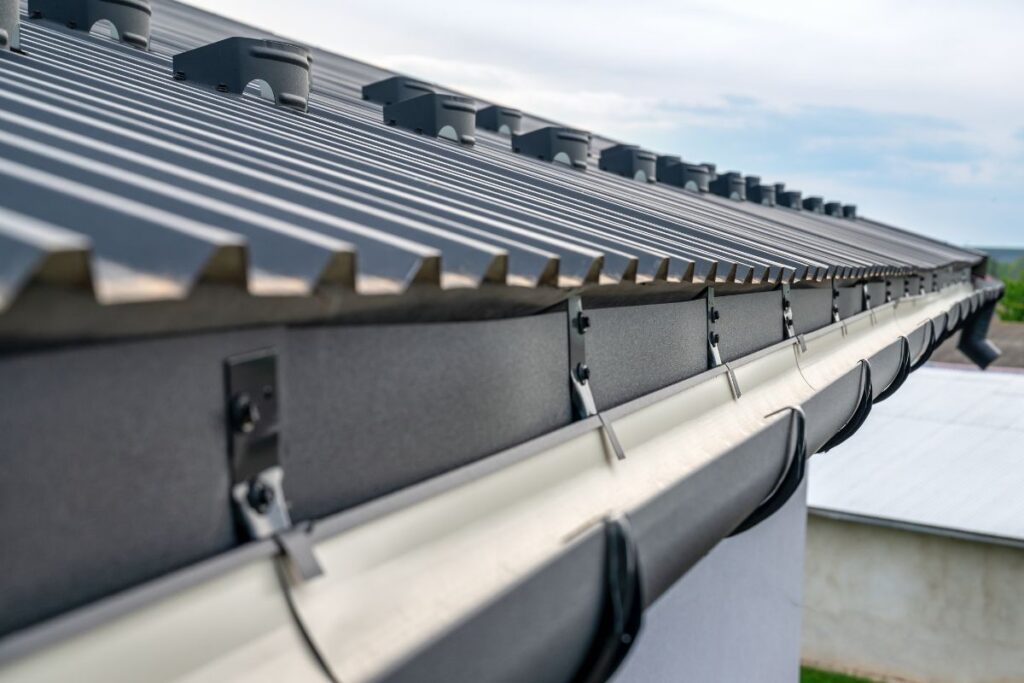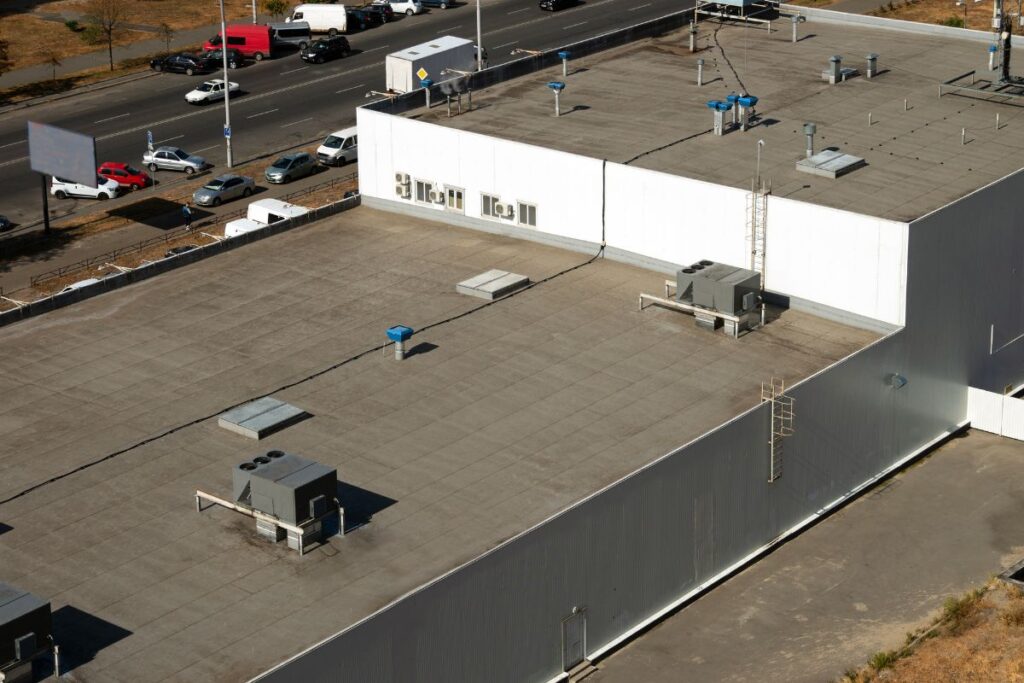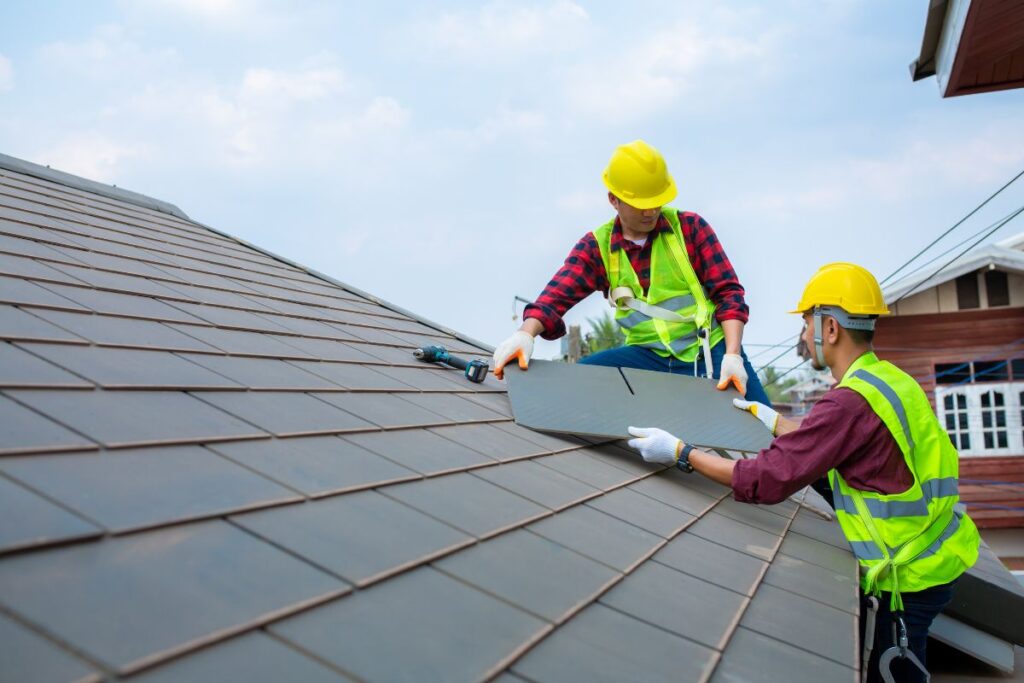A commercial roof does more than merely protect a building and its occupants from the elements. One of its most critical, yet often overlooked roles, is managing water drainage. Proper drainage is vital to the lifespan and performance of a commercial roofing system. Here’s why:
- Prevents Ponding Water
Ponding water, or water that remains on a roof 48 hours after rainfall, is a common issue on flat commercial roofs. Over time, it can lead to leaks, damage roofing materials, and add excessive weight to the structure, causing sagging or even collapse.
- Avoids Leaks and Water Damage
With an effective drainage system, rainwater and melting snow are directed away from the roof, preventing water from seeping into the roofing material and causing leaks. This avoids damage to both the external roofing system and the building’s interior.
- Extends Roof Lifespan
By quickly removing water from the roof surface, an effective drainage system minimizes the wear and tear on the roofing material. This reduces the need for regular repairs and replacements, ultimately extending the life of the roof.
- Reduces Maintenance Costs
Roofs with poor drainage often require frequent maintenance to repair water-related damage. However, a well-drained roof requires fewer repairs, leading to lower maintenance costs.
- Protects Building Foundation
Proper roof drainage also plays a role in protecting a building’s foundation. By effectively diverting water away from the structure, it prevents soil erosion around the foundation, which could otherwise lead to instability.
To ensure your commercial roof has effective drainage, consider elements like roof design, drainage system installation (including gutters, downspouts, and internal drains), and regular maintenance to keep the system clear of debris. By recognizing the importance of proper drainage, you can protect your investment, prolong the life of your roof, and maintain the safety and integrity of your commercial building.


